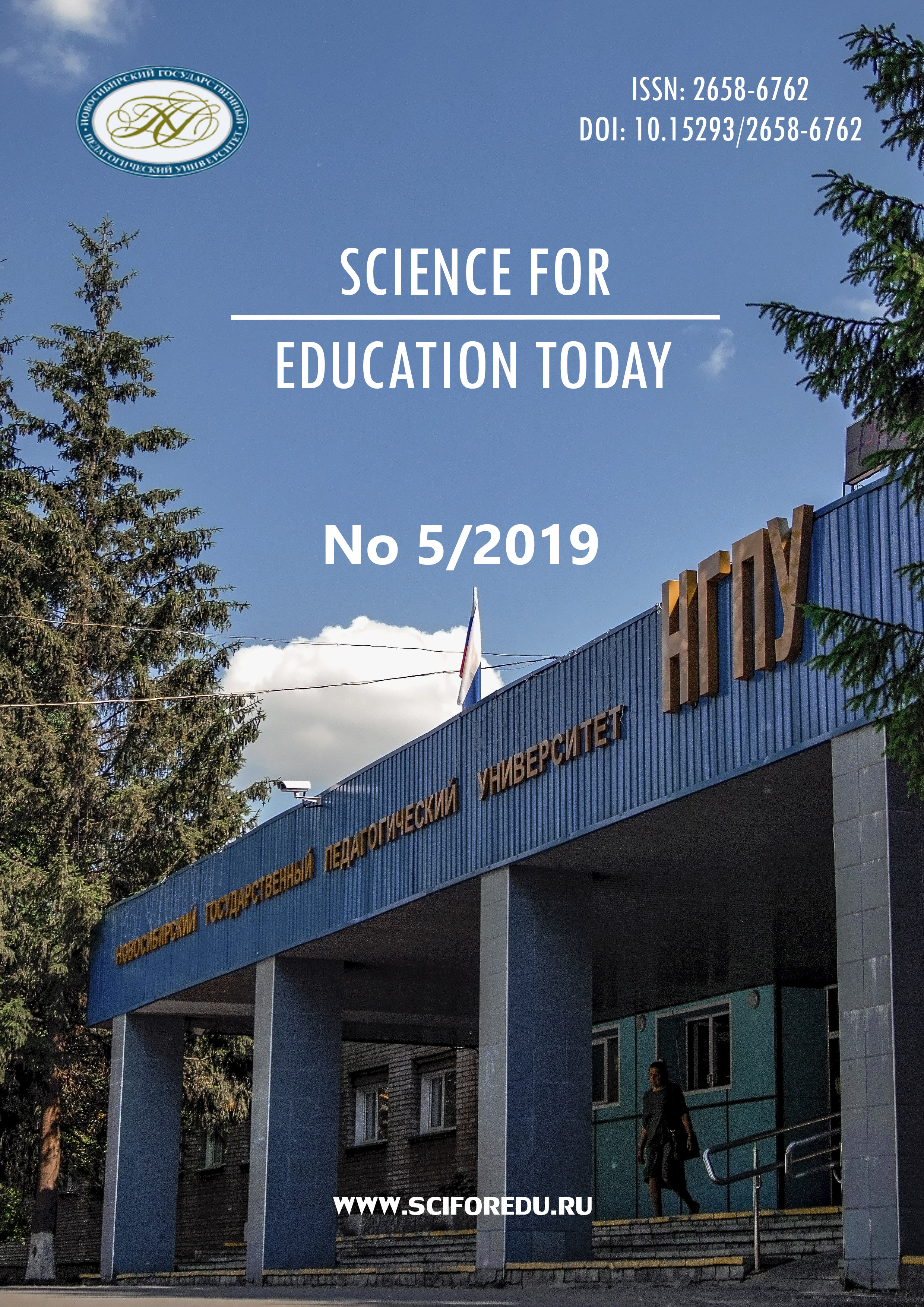Особенности адаптации сердечно-сосудистой системы, автономной нервной регуляции сердечного ритма и эндокринной системы к нагрузкам разного характера у школьников 10–15 лет
Adaptation of cardiovascular system, autonomous nervous regulation of heart rate and endocrine system to different types of loads in 10-15-year-old schoolchildren: Characteristic features
Author(s): Irina Vladimirovna Ermakova, Svetlana Borisovna Dogadkina, Larisa Vyacheslavovna Rubleva, Galina Vasilievna Kmit, Valeriya Nikolaevna Bezobrazova, Alim Nasimovich SharapovSubject(s): School education, Sports Studies
Published by: Новосибирский государственный педагогический университет
Keywords: Adaptation; Adolescents; Heart rate variability; Electrocardiography; Myocardial contractile function; Tone of cerebral arteries; Cortisol; Orthostatic effect; Physical stress; Mental stress
Summary/Abstract: Introduction. Adaptation of adolescents to changing environmental conditions is one of the most important issues in age-related physiology. In order to reveal the characteristics of adolescents’ adaptation, the authors conducted this study on the reaction of the circulatory system, autonomic nervous and endocrine systems to different types of loads. Materials and Methods. 200 schoolchildren aged between 10 and 15 years of age were examined using the methods of spectral analysis of heart rate variability, electrocardiography, polycardiography, bipolar rheoencephalography and enzyme immunoassay for cortisol in saliva. Results. The study reveals the increase in sympathetic and significant decrease in parasympathetic activity in the regulation of heart rate in response to the orthostasis in all children aged between 10 and 15 years.It is shown that the main criteria for successful adaptation include: the vagal or normotonic type of the autonomic nervous regulation of heart rate, high heart rate variability with a predominance of high frequency component, an adequate response of heart rate variability to orthostatic effects.Dynamic Physical Exercises cause shortening of the total duration of the cardiac cycle and electrical systole in children aged between 10 and 15 years, reducing the time of atrioventricular conduction. Changes in the bioelectric activity of the myocardium indicate an adequate adaptation response of the children to the load.Two variants of short-term adaptation of the myocardium contractile function to exercise were identified. The first option was observed in the majority of adolescents aged between 10 and 15 years and testified to the favorable reaction of the cardiovascular system to physical exertion. In the second variant, a more intense reaction of the myocardium contractile function to physical activity was observed, which was revealed in girls aged between 11 and 13 years and boys aged between 12 and 13 years.The urgent adaptation of the cerebral blood circulation to mental stress in most 10–15 year-old adolescents was not accompanied by tension in the cerebral blood flow regulation mechanisms and was favorable, whereas tension in regulation mechanisms was observed in some adolescents (22–34% of the sample). Two types of endocrine response to mental load were identified: the first type is an increase in the level of cortisol in the saliva, the second type is a decrease in its concentration. Conclusions. The results showed that physical activity in all children causes an adequate reaction of indicators of myocardial bioelectrical activity and 2 variants of adaptation of the myocardium contractile function: the first is favorable and the second is with contractile function tension, observed at the age of 11-13 years. Mental load causes 2 types of cerebral blood circulation reactions: the 1st type is not accompanied by tension regulating the blood circulation of the brain and is favorable, the 2nd type is accompanied by tension of regulation mechanisms. The endocrine system also showed 2 types of response to mental stress: with an increase and decrease in the level of cortisol in saliva. Orthostatic effect leads to a shift in autonomic nervous activity in the direction of increasing sympathetic influences. Based on the response of HRV to orthostatic effects, criteria for successful adaptation are identified.
Journal: Science for Education Today
- Issue Year: 9/2019
- Issue No: 5
- Page Range: 176-204
- Page Count: 29
- Language: Russian

